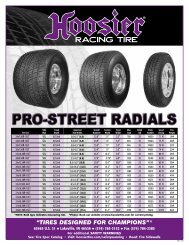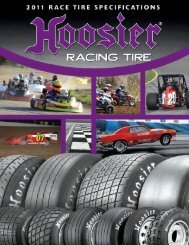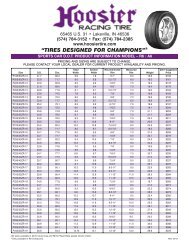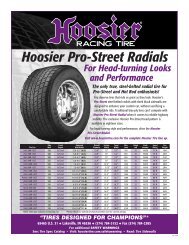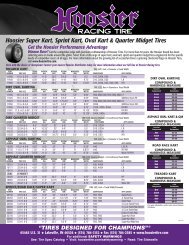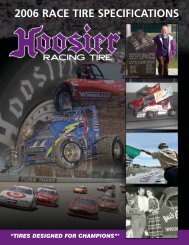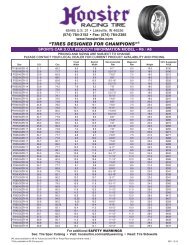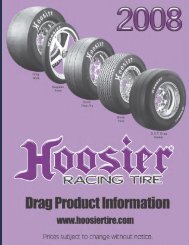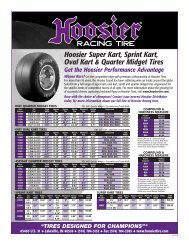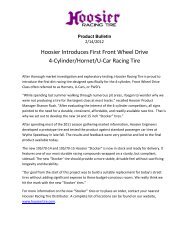in the united states district court for the - Hoosier Racing Tire
in the united states district court for the - Hoosier Racing Tire
in the united states district court for the - Hoosier Racing Tire
You also want an ePaper? Increase the reach of your titles
YUMPU automatically turns print PDFs into web optimized ePapers that Google loves.
Case 2:07-cv-01294-TFM Document 263 Filed 09/15/2009 Page 27 of 34<br />
• many contracts provide <strong>for</strong> a duration of multiple years and <strong>the</strong> duration is<br />
proposed by <strong>Hoosier</strong>; and<br />
• many contracts have “evergreen” clauses that “automatically renew” be<strong>for</strong>e<br />
<strong>the</strong> rac<strong>in</strong>g season ends. If <strong>the</strong> contract is not renewed, <strong>Hoosier</strong> does not guarantee <strong>the</strong> end of<br />
year po<strong>in</strong>t fund.<br />
Moreover, STA argues that <strong>in</strong> long term exclusive relationships, <strong>Hoosier</strong> exerts<br />
undue <strong>in</strong>fluence so <strong>the</strong> sanction<strong>in</strong>g bodies must “choose” to renew exclusive contracts with<br />
<strong>Hoosier</strong>.<br />
A fundamental flaw <strong>in</strong> STA’s argument, however, is that STA has failed to produce<br />
record evidence which demonstrates that <strong>Hoosier</strong> has engaged <strong>in</strong> coercive measures which has<br />
prevented STA from enter<strong>in</strong>g <strong>in</strong>to its own exclusive s<strong>in</strong>gle tire contracts. The record evidence<br />
reflects that <strong>for</strong> many years sanction<strong>in</strong>g bodies have adopted s<strong>in</strong>gle tire rules, <strong>in</strong> which racers<br />
participat<strong>in</strong>g <strong>in</strong> <strong>the</strong>ir events are required to use a s<strong>in</strong>gle type or brand of tire.<br />
The record also reflects that many sanction<strong>in</strong>g companies believe that s<strong>in</strong>gle tire<br />
rules ensure equal access to a uni<strong>for</strong>m product, lead to <strong>in</strong>creased safety, and lower <strong>the</strong> costs of<br />
tires to <strong>the</strong> drivers by elim<strong>in</strong>at<strong>in</strong>g <strong>the</strong> so-called “tire wars.”<br />
Fur<strong>the</strong>r, <strong>the</strong> record reflects that sanction<strong>in</strong>g bodies go through several steps when<br />
decid<strong>in</strong>g whe<strong>the</strong>r to adopt a s<strong>in</strong>gle tire rule and, if so, which brand to select. First, <strong>the</strong><br />
sanction<strong>in</strong>g body decides what <strong>the</strong> rules of its race will be, <strong>in</strong>clud<strong>in</strong>g its tire rule, which may be<br />
an open tire rule, a s<strong>in</strong>gle tire rule, or some comb<strong>in</strong>ation of <strong>the</strong> two. Next, <strong>the</strong> sanction<strong>in</strong>g body<br />
may talk to suppliers about <strong>the</strong>ir will<strong>in</strong>gness to provide tires or may send out a <strong>for</strong>mal RFP to<br />
<strong>the</strong> manufacturers or <strong>the</strong>ir distributors. Last, <strong>the</strong> sanction<strong>in</strong>g body selects <strong>the</strong> manufacturer or<br />
27



